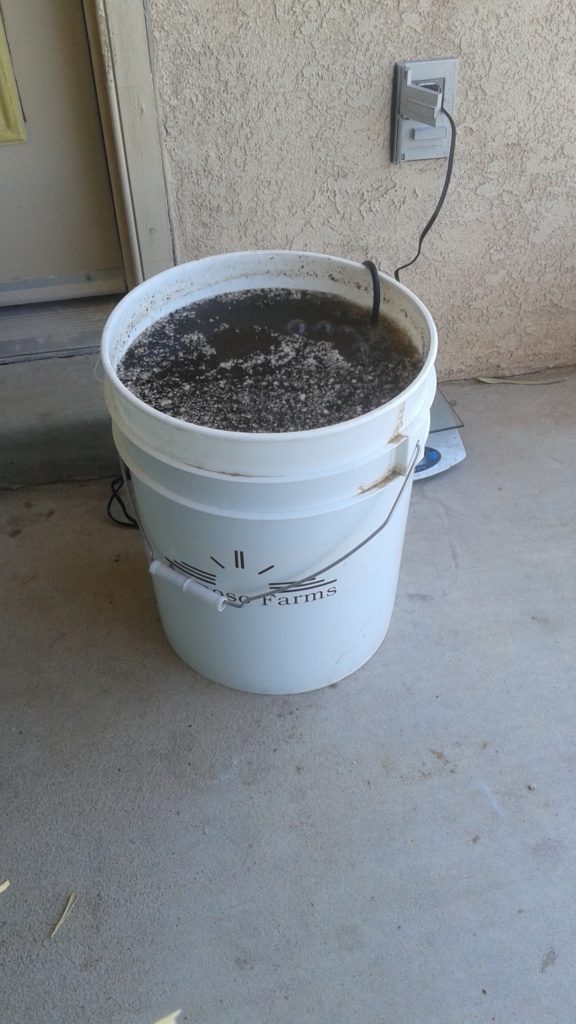I talked with some folks who know much more than I do about vermiculture and compost tea mixtures, and finally decided to give my first try for making a more potent & beneficial tea for all my crops. One aspect that was driven to me, was the fact that you should find a way to make air(oxygenate) and waves in your tea mixture – imagine you have a 5 gallon bucket with water and some worm casting or compost dissolving in it. The latest mixture may not be 100% correct, but I am going to give it a trial and see what the results are – here are the contents I am testing for a 5 gallon bucket of city water that has been allowed to “air out” the chlorine that is present, as chlorine is not going to allow the bacteria to grow.
1. a few hand fulls of fresh local earthworm castings
2. a few hand full of local compost
And to add to the test, we are also going to add at the same time, these items:
1. a hand full of green sand or rock dust from green sand.
2. a hand full of kelp meal
I also added a small “fish tank” pump, but this is not enough to allow the mixture to aerate well – Im going to try this mix out, but I will upgrade to a larger pump to allow a more turbulent compost mixture, as some folks say you need to really “agitate” the water and create waves on the surface in order to get the most amount of oxygen in your water to allow your beneficial microorganisms to grow.
Update – 06-29-16
Instead of upgrading to a larger pump, I decided to try and get more of this small fish tank pump. I used a “1/4” gallon per hour drip emitter on the end of the hose into the 5 gallon bucket, replacing the standard “bubbler” that is available at your pet store. Since the 1/4gph emitter is so light, I had to use a small flat rock to hold the nozzle to the bottom of the 5 gallon bucket. I would say this method is working much better, as it looks like the tea is brewing, without me having to keep stirring it up. I will do a post about this setup next.
